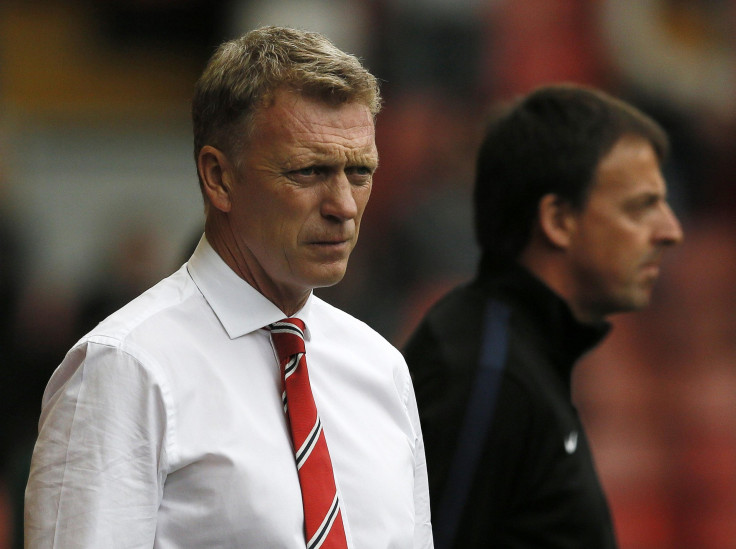Manchester United Transfer News: Fellaini Signs; Herrera, Coentrao And Khedira Deals To Go Ahead In January After Failed Deadline-Day Moves?

Manchester United were able to secure a first major signing of the David Moyes era on transfer deadline day, yet it couldn’t mask what was a bungling end to a mismanaged window. Marouane Fellaini finally arrived on Monday for a fee of £27.5 million. It will surely be a source of embarrassment that the amount paid surpassed by £4 million the value of the Everton midfielder’s buyout clause, which expired without an offer by United at the end of July. With Moyes having been Everton manager at the time the release figure was inserted, one thing that United could not claim was that they weren’t aware of its existence or its precise details.
Still, Moyes sounded a happy tone at being able to bolster a midfield that he had immediately targeted as an area of the squad in need of strengthening.
“I have worked with Marouane for five years and I’m delighted he has decided to join Manchester United,” he said in a statement on Manchester United’s official website. “He is a player with great ability and strength and I think he will make a real difference to our squad.”
The bigger story on Monday, though, was United’s failings to further add to their squad. Most notably an expected deal for Athletic Bilbao midfielder Ander Herrera failed in farcical circumstances. Having already emerged empty handed from their pursuits of Thiago Alcantara and Cesc Fabregas, United waited to make their move for a third Spanish midfielder until the dying embers of the window.
The Premier League champions should have been aware that the Basque club would refuse to sell for less than the player’s €36 million (£30.5m) buyout clause and the subsequently legal and tax complications that would be involved in settling that amount. Instead, United tried to haggle over the fee. The story of United officials turning up at the offices of the Spanish Football Association to deposit the buyout clause before later turning out to be imposters only added to the lunacy of the whole affair.
Herrera, 24, could well remain on Moyes’s radar heading into January’s transfer window, should it be decided that his release clause represents value for money rather than merely a last-minute panic buy. With Athletic not involved in European competition, there would be no issue with Herrera being cup-tied.
More problems in Spain were encountered by Manchester United as they failed in an attempt to sign Real Madrid midfielder Sami Khedira. It has been widely reported that a €40 million offer arrived from Old Trafford on Monday but that it was turned down by the Spanish giants. United’s bid was confirmed by Khedira on Tuesday.
“The club turned down the offer and that was it,” he said at a Tuesday press conference. “We didn’t really have the chance to discuss it. I had a longer chat with [Madrid manager] Carlo Ancelotti a few weeks ago and it was relatively clear to me that I’d stay at Real.”
It is difficult to foresee Khedira’s move now going through in January. Deals between two big clubs rarely happen in midseason and the Germany international would almost certainly be unable to feature for United should they progress to the knockout stages of the Champions League.
Manchester United’s other failed business on deadline day involved Khedira’s Madrid teammate Fabio Coentrao. The Portuguese left-back was targeted for a season-long loan move after repeated bids for Everton’s Leighton Baines were rejected. There remained confusion as to whether the deal had actually gone through until Tuesday. However, because United’s approach came so late, Madrid were unable to secure their long-mooted replacement, Guilherme Siqueira.
Coentrao had made it clear that he wanted to leave the Bernabeu this summer and had also been linked with Tottenham. A deal could yet go through in the next transfer window, especially with Moyes appearing to have little faith in Patrice Evra.
© Copyright IBTimes 2025. All rights reserved.





















